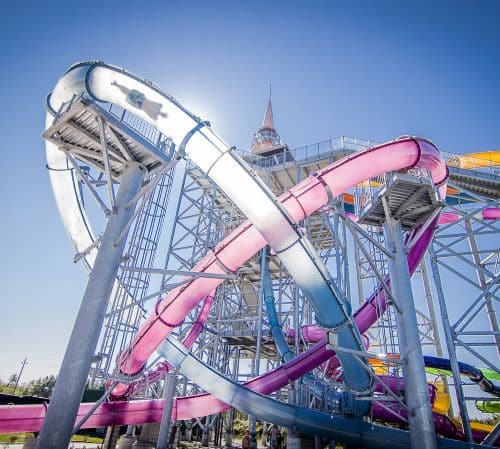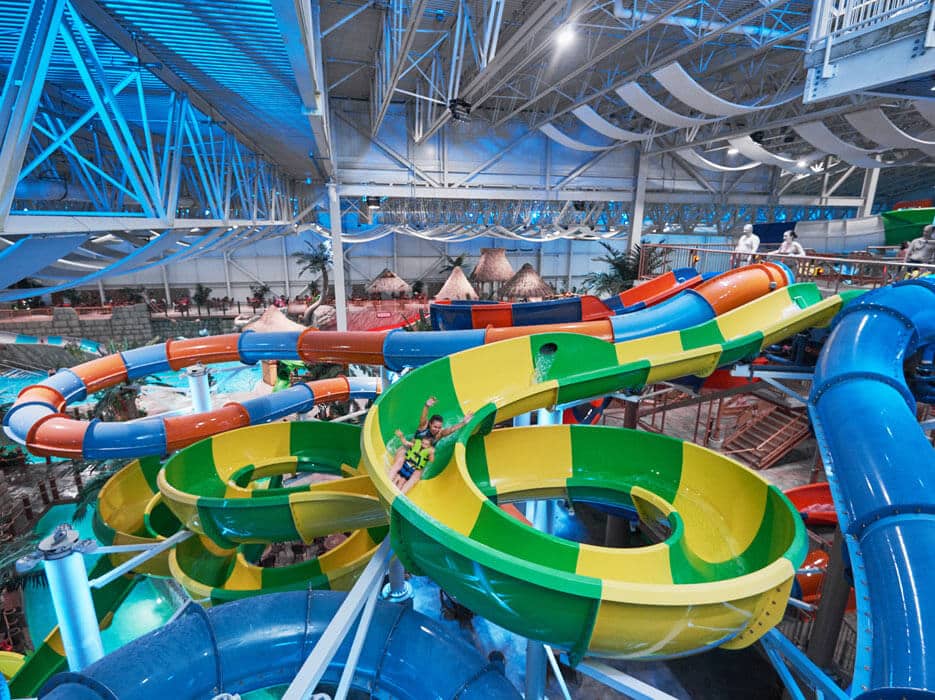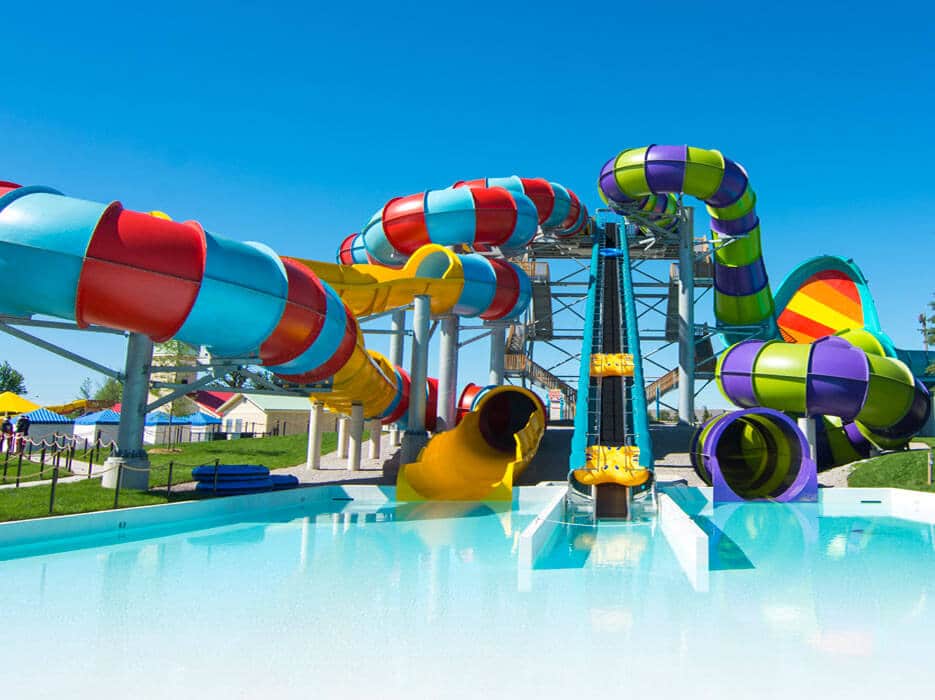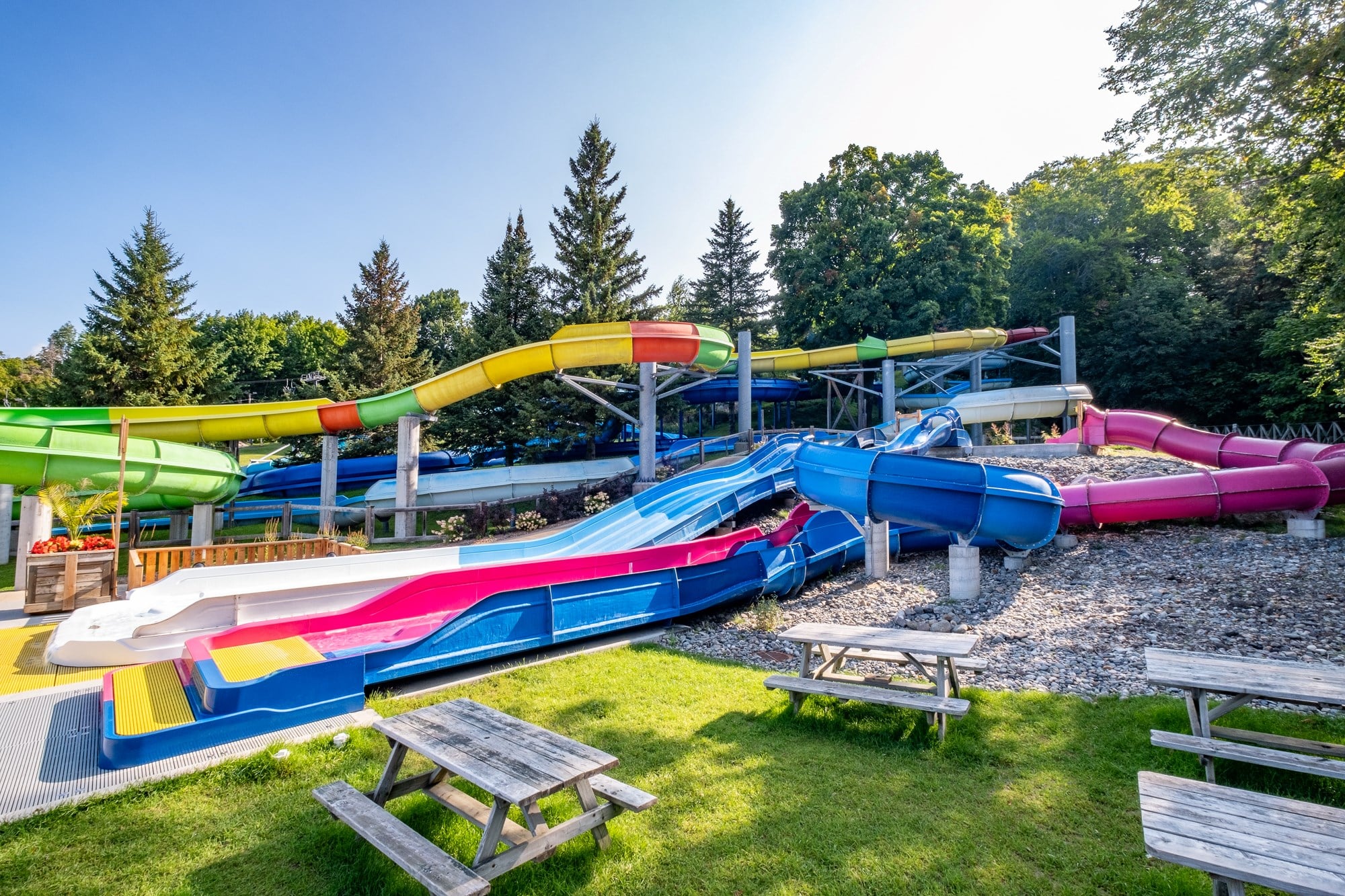Challenges Faced When Building a Waterpark: From Design to Operation
Creating a waterpark is a dream come true for many local municipalities. Offering the promise of refreshing fun and relaxation for visitors of all ages, a local aquatic attraction also provides many economic benefits. However, turning this dream into a reality presents a host of complex challenges that require meticulous planning, coordination, and expertise.
This article explores the many challenges aquatic design experts overcome when building a waterpark, from finalizing the design to managing a host of construction elements, and ultimately, delivering an exciting and economically beneficial attraction for the community.

Finalizing the Waterpark's Design Before Construction
Before the first shovel hits the ground, the process of building a waterpark begins with the important step of designing the facility. This initial phase involves addressing various factors:
- Attractions Selection: Choosing the right mix of water attractions is a critical decision. This includes water slides, wave pools, lazy rivers, and splash zones. Balancing thrill rides with family-friendly attractions is essential to cater to a wide range of visitors.
- Visitor Demographics: Understanding the target audience is the first step. A waterpark designed for families with young children will differ significantly from one targeting teenagers and thrill-seekers. Attractions will need to be designed that fit visitors’ interests accordingly.
- Geographical Considerations: The geographical location of the waterpark plays an important role in its design. Factors such as available space, proximity to water sources, and local topography must be carefully assessed.
- Weather Conditions: The local climate can greatly impact the waterpark’s success. Regions with extreme temperatures or frequent inclement weather may require additional indoor or seasonal features. To overcome this, many waterparks are built with indoor attractions that transition to outdoor attractions.
- Infrastructure and Accessibility: Adequate infrastructure, including road access, parking facilities, and utilities, must be planned to ensure smooth operations and safety.
- Environmental Impact: Responsible waterpark construction and environmental impact assessments are essential. Water conservation, waste management, and ecological preservation should be priorities.

Coordination Between Trades Within Limited Space
Once the design is finalized, waterpark construction phase begins, and it comes with its own set of challenges. Effective coordination among diverse trades is the cornerstone of a waterpark project‘s success. This collaboration ensures that the various elements, from excavation to electrical systems, seamlessly integrate within the limited space, guaranteeing safety, quality, and an exceptional visitor experience.
- Space Constraints: Waterparks often occupy limited space, requiring precise coordination between various trades. Excavation, electrical, plumbing, ventilation, fire protection, and speaker systems must all fit within the allocated area.
- Safety Standards: Ensuring the safety of guests is paramount. Proper installation and coordination of fire protection systems, first aid stations, and lifeguard towers are critical. Smart aquatic design and construction will always focus on the safety of visitors as a first priority.
- Efficient Use of Resources: Waterparks demand extensive water and energy resources. Efficient plumbing and electrical systems must be installed to minimize waste and reduce operational waterpark costs. Sustainability and conservation are two skills of the aquatic construction trade that are always evolving.
- Noise Control: The presence of multiple attractions and guests can result in high noise levels. Effective speakers and sound systems are essential to enhance the visitor experience while avoiding noise disturbances for neighboring areas.
- Water Treatment: Proper water treatment and filtration systems are crucial to maintain water quality, safeguarding the health of visitors and the longevity of the attractions.

Working on Multiple Elevations when building a waterpark
Aquatic design and construction often requires working on multiple elevations, which can complicate the waterpark construction process. Balancing various elevations is a key challenge in waterpark projects, involving underground, surface-level, and above-ground structures. Aquatic construction experts must ensure connectivity, accessibility, and safety across these elevations.
- Underground Infrastructure: Many waterparks incorporate underground tunnels and service areas to connect attractions and facilitate maintenance. This requires careful planning and excavation.
- Surface-Level Construction: The primary attractions, pools, and walkways are typically built at ground level. Proper drainage systems are essential to prevent flooding and ensure visitor safety.
- Above-Ground Structures: Some waterpark features, such as elevated water slides, observation towers, and support buildings, are constructed above ground level. Ensuring structural integrity and safety is a priority.
- Accessibility: Managing elevations also involves providing accessibility for young visitors and those with disabilities, necessitating the installation of ramps, elevators, and other accommodations.

Managing Multiple Features and Attractions Simultaneously
Waterpark construction involves juggling various features and attractions at the same time, adding a complex element to the project. Quality and safety cannot be sacrificed. Successful management of this phase is key to meeting project timelines and delivering an outstanding aquatic attraction.
- Synchronized Timelines: Different attractions may have varying construction timelines. Managing these timelines to ensure that all components are completed in harmony is a significant challenge.
- Skilled Labor: Skilled labor is required for the installation of specialized water features, such as wave generators, water slides, and interactive play structures. Hiring and coordinating these experts takes time and knowledge of the industry by a tenured project manager.
- Quality Control: Maintaining consistent quality across all attractions and features is essential for visitor satisfaction and safety. Rigorous quality control measures must be in place.
- Testing and Certification: Before opening to the public, waterpark attractions must undergo rigorous testing and certification processes to ensure they meet safety and operational standards. With so many visitors’ safety involved, this phase cannot be underscored.
Whenever building a waterpark it is a complex endeavor that demands careful planning, coordination, and expertise. From finalizing the design to managing multiple trades, elevations, and attractions simultaneously, each phase presents unique challenges that require thorough attention.
